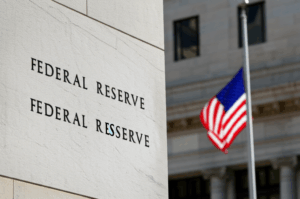Nasdaq 100: Tracking the Final Waves Before Correction
For young investors navigating the dynamic landscape of the stock market, the Nasdaq 100 has been an undeniable beacon of growth. Comprising 100 of the largest non-financial companies listed on the Nasdaq stock market, this index is heavily weighted towards technology and innovative growth sectors. Its performance over recent years, driven by mega-cap tech giants, has been nothing short of spectacular, delivering significant returns that have captured the attention of new market entrants. However, as the index continues to hover near its all-time highs, a growing chorus of financial analysts and market watchers are beginning to discern what they describe as the “final waves” of this impressive ascent, signaling the potential for an imminent market correction. This perspective is not about fear-mongering, but rather a prudent observation of market cycles and the technical indicators that often precede a period of consolidation.
A market correction is typically defined as a decline of 10% or more from a recent peak. While seemingly daunting, such events are a normal and healthy part of any functioning market cycle, acting as a natural rebalancing mechanism that cools down overheated valuations and allows for new buying opportunities. The Nasdaq 100, with its concentration in high-growth, high-valuation tech stocks, is particularly susceptible to these swings. When money flows abundantly into these names, they soar; conversely, they can experience sharper pullbacks when investor sentiment shifts or macroeconomic conditions tighten. Currently, the narrative revolves around several key factors that suggest the market might be in the late stages of its current bullish cycle. Technical analysts often refer to market movements in terms of “waves,” implying a cyclical pattern of expansion and contraction. The notion of “final waves” suggests that the current upward momentum may be nearing exhaustion, with diminishing returns for each subsequent surge, before a more significant retracement occurs.
Among the specific signals being closely monitored are various technical indicators that measure momentum and trend strength. For instance, some analysts point to divergences where the index’s price continues to climb, but underlying momentum indicators like the Relative Strength Index (RSI) or Moving Average Convergence Divergence (MACD) show a weakening trend, suggesting that the buying pressure is not as strong as the price action implies. Volume analysis also plays a crucial role; a decline in trading volume during price rallies can indicate a lack of conviction among buyers. Beyond technicals, fundamental concerns are also surfacing. The persistent inflationary pressures and the likelihood of sustained higher interest rates by central banks present a significant headwind for growth stocks, which rely heavily on future earnings potential being discounted at lower rates. Higher borrowing costs can also dampen corporate profitability and consumer spending, impacting the bottom line of even the largest tech firms. Furthermore, while the dominant few mega-cap stocks have buoyed the Nasdaq 100, the performance of the broader market and a potential widening of market breadth are being watched. If only a handful of stocks are driving the index higher, it can signal an underlying weakness that leaves the market vulnerable to sharp declines should those leaders falter. Historically, periods of extreme market concentration have often preceded periods of greater volatility. Understanding these potential shifts is crucial for young investors who are building their portfolios and need to be prepared for various market conditions, not just continuous upward trends.
Ultimately, while the timing of a correction is impossible to predict with certainty, the discussion around “final waves” serves as a critical reminder for investors to assess their risk exposure and maintain a long-term perspective. Corrections are not market crashes, and the Nasdaq 100, underpinned by innovation and strong companies, has historically recovered from such downturns, often emerging stronger. However, preparedness is key. This could involve re-evaluating diversification strategies, ensuring portfolios are not overly concentrated in a few high-flying names, or simply holding a portion of cash to capitalize on potential buying opportunities should a pullback occur. The current market phase underscores the importance of vigilance, combining an understanding of technical signals with a keen awareness of macroeconomic factors, to navigate the complexities of investing successfully.





